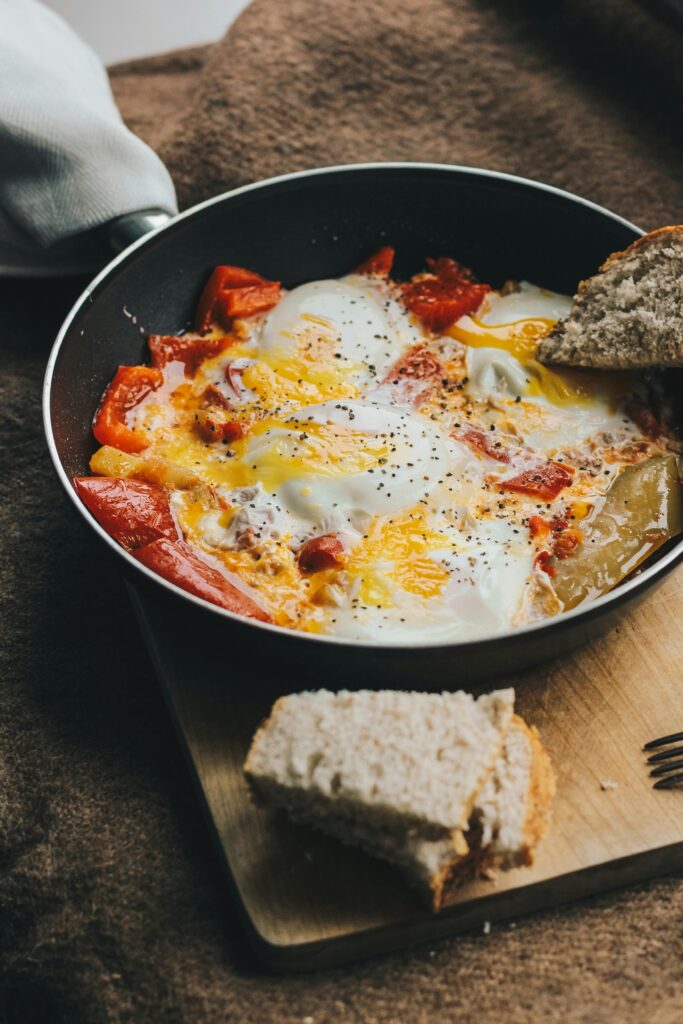Scrambled eggs might look simple, but there’s an art to making them truly delicious. We’ve all had eggs that turned out rubbery, too dry, or bland. The secret to creamy, fluffy scrambled eggs is in the technique—and once you learn it, you’ll never go back.
This complete guide walks you through everything: the science of eggs, step-by-step cooking instructions, mistakes to avoid, creative variations, and expert tips. Whether you’re cooking for yourself, your family, or brunch with friends, these scrambled eggs will always impress.
Why Scrambled Eggs Are So Popular
- Simple to make – Just a few ingredients, one pan, and a few minutes.
- Comforting and nostalgic – Many of us grew up eating scrambled eggs for breakfast.
- Versatile – They can be plain, cheesy, herby, spicy, or loaded with veggies.
- Nutritious – Eggs are packed with protein, healthy fats, and vitamins.
- Anytime food – Perfect for breakfast, but equally satisfying for lunch or dinner.
The Science Behind Perfect Scrambled Eggs
When you scramble eggs, the proteins in the whites and yolks change shape and set. If you cook them gently, they form soft curds that trap moisture, creating a creamy texture. If you cook them too quickly, the proteins squeeze out the water, leaving eggs dry and tough.
Here’s what matters most:
- Low to medium heat = soft, tender eggs
- Butter or oil = prevents sticking and adds flavor
- Milk, cream, or water = creates steam for fluffiness
- Gentle stirring = small folds and creamy texture
Common Mistakes to Avoid
- Cooking on high heat – makes eggs rubbery.
- Overcooking – eggs keep cooking after leaving the pan.
- Skipping fat – butter or oil adds richness and prevents sticking.
- Overmixing while cooking – breaks the curds into tiny, dry pieces.
- Adding fillings too early – watery vegetables or cheese can ruin the texture.
Step-by-Step Recipe: Classic Fluffy Scrambled Eggs
Ingredients (Serves 1–2):
- 3 large eggs
- 2 tablespoons milk, cream, or water (optional, for creaminess)
- Salt and pepper, to taste
- 1 tablespoon butter or oil
Instructions:
- Whisk the eggs – Crack into a bowl, add milk or cream, salt, and pepper. Beat until smooth.
- Heat the pan – Place a nonstick skillet over medium-low heat. Melt the butter until foamy but not browned.
- Add the eggs – Pour into the pan and let sit for 5–10 seconds.
- Stir gently – Using a spatula, push eggs from edges toward the center to form soft curds.
- Cook slowly – Keep folding and stirring until mostly set but still slightly glossy.
- Remove from heat – The eggs will finish cooking on the plate.
👉 Result: soft, creamy, golden scrambled eggs!
Variations of Scrambled Eggs
- Cheesy Scramble – Add grated cheddar or mozzarella just before removing from the pan.
- Veggie Scramble – Mix in sautéed mushrooms, peppers, spinach, or tomatoes.
- Herb Scramble – Sprinkle with fresh chives, dill, or parsley.
- Spicy Scramble – Add chili flakes, jalapeños, or hot sauce.
- Protein Scramble – Stir in diced ham, bacon, or smoked salmon.
Tips for Perfect Scrambled Eggs Every Time
- Use the freshest eggs you can find.
- Preheat the pan before adding eggs.
- Stir gently and slowly for creamy folds.
- Remove eggs before fully cooked—carryover heat will finish them.
- Cook fillings separately to avoid extra moisture.
Serving Ideas
Scrambled eggs pair beautifully with:
- Toast, bagels, or croissants
- Avocado slices
- Roasted vegetables
- Fresh fruit for a balanced breakfast
- A sprinkle of feta or parmesan on top
Why Scrambled Eggs Are More Than Just Breakfast
Scrambled eggs aren’t just food—they’re a moment of comfort. They’re the first dish many of us learn to cook, a go-to meal after long days, and a timeless breakfast classic. With a little care, you can take them from ordinary to extraordinary.
